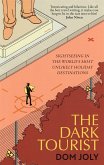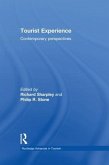Dark tourism is the practice of visiting sites associated with death and disaster. Participation is increasing, yet the machinations behind dark tourism remain shrouded in mystery, and intentionally so. This book, a companion to I Am The Dark Tourist Travels to the Darkest Sites on Earth, explores the seductive premise of 'transformation' that dark tourism offers: that visiting memorials to past tragedy will ultimately lead us to become better versions of ourselves. Championed by enthusiastic governments - notably in the UK - 'must have' memorialisation provides an opportunity to engage the public with contrived grief from the past to be replaced by establishment neglect in the future. From the waters of Loch Ness to the chaos of Mexico's Dia de Muertos, H.E. Sawyer considers the questions feared by state-sponsored dark tourism, and poses one of his own: "Ever get the feeling you've been cheated?"








